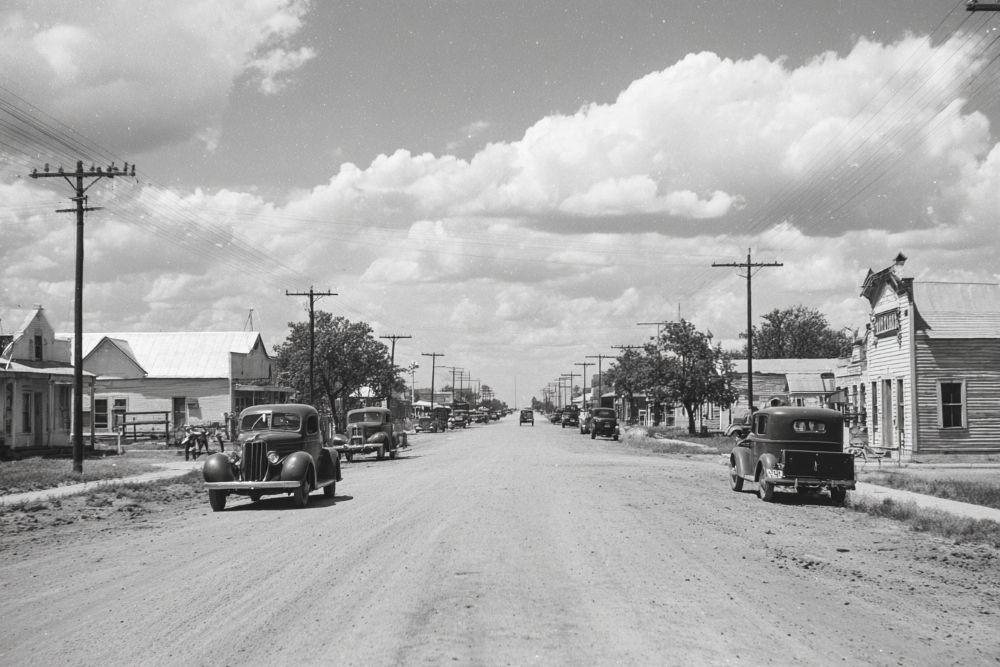
Deaf Smith County. A portion of the vast holdings of the Capital Syndicate Ranch was located in Deaf Smith County, and for many years almost the entire area of 991,360 acres were included in great ranches, and the grazing of cattle is still almost the only vocation except along the line of railways.
Deaf Smith County was organized October 3. 1890, and the first county seat was at La Plata, a village no longer in existence. When the Pecos & Northern Texas Railroad from Amarillo was completed through the county towards the close of 1898, a station was established at a point called Hereford, and a few houses soon marked the site.
This location was voted the county seat, and it has since been the metropolis of the county. In 1910 it had a population of 1,750. Hereford has for a number of years been the shipping points for cattle it Northwest Texas, and besides its varied commercial enterprise is also a school town. Through the efforts of local citizens Prof. Randolph Clark, one of the founders of the noted Add-Ran College at Thorp Springs, which became the nucleus for the Texas Christian University, was induced to interest himself in the founding of a new college in the Northwest, and as a result in 1902 the Panhandle Christian College was founded at Hereford. Other towns along the Pecos & Northern Texas are Dowell and Dawn, and there are one or two stations in the northwestern corner of the county along the line of the Rock Island Road, which was built about 1910.
In 1880 Deaf Smith County had a population of 38 ; in 1890, 179 ; in 1900, 843; in 1910, 3,942, and in 1920, 3,747. The valuation of property in 1903 was $1,630,092 ; in 1913, $5,992,272, and in 1920, $7,346,780.
Like many other sections of the Panhandle, Deaf Smith County is underlaid by an abundant supply of water, reached at a depth of from 40 to 150 feet. This supply has been drawn upon for many years for stock and domestic purposes. and more recently considerable enterprise has been manifested in irrigating crops from the same source.
In 1913 more than four thousand acres were irrigated. As compared with the total area only a small portion of Deaf Smith County has been brought under cultivation. In 1910, 273,456 acres, less than a third of the total area, was included in farms or ranches, and about 86,000 acres were classified as "improved land," as compared with about 11,000 acres in 1900. There were 97 farms and ranches in 1900 and 361 in 1910. The last census enumerated 42,056 cattle ; 4,057 horses and mules, and 4,454 sheep. The chief crops in 1909 were : Hay and forage crops 18,892 acres ; wheat, 7.973 acres ; oats, 1.934 acres ; kaffir corn and milo maize, 1,495 acres, and corn, 126 acres. - History of Texas, 1922, by W. Barrett Travis.





























